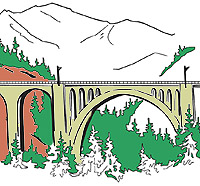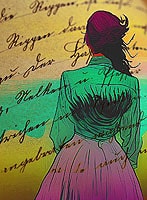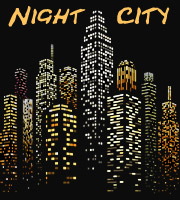Formerly posted as ‘With the Finality of Seventeen,' revised
Reading from the Horror Stories of Robert E. Howard, 2008, Del Ray, NY, pages 43-48 [one page missing from the type script], originally published in Coven 13, 1970
A Mister Costigan and his seventeen year old sister are arguing about the literary value of fairy tales. Knowing all at 17, she refuses to believe anything lurks beneath the surface of visible social life. They are discussing The Shining Pyramid by Arthur Machen, and go onto discuss a work by Michael Arlen.
The man admonishes the girl that “all myths have a concrete beginning” and goes on to state an ages old truth that, “Young people have a way of either accepting entirely or rejecting entirely such things as they do not understand.”
He goes onto express theories about “the garlic eaters,” those primitive peoples such as the Basques and Lapps who had survived the Caucasian invasion of Europe in small enclaves and out of the way places. This gets her interest up and the tour of Europe with his “flapper sister” becomes a nightmare as she threatens to dare the supposedly haunted rocks out on the moor and dispel any such belief in curses and such.
By night, having forbidden his sister from leaving their accommodations, he stands at a window and is awed by the “gaunt and terrible” ruins his sister had threatened to dare.
Mister Costigan finds out from the wait staff that his sister went out for the night and he rushes out to the moor to retrieve her, where she is being attacked by stunted and gnarled shadow-bodies. What follows is a spectral battle and chase in which this American fails to reach his sister through the shadowy enemy and is wounded. As she is taken down he screams out, and in effect, calls back into time to some ancient race warrior who once hunted the ancestors of these spectral people to extinction.
The story is a mixture of a racial memory yarn and a ghost story, with the cursed location and the blood of ancestral enemies acting in concert to form a sort of event horizon, a fold in time facilitating the travel of vengeful spirits between the ages.
More than any other story The Little People sketches in elemental outline the heroic fiction Howard would undertake across a dozen mythic lives, from behind a typewriter in a world that was supposed to have transcended the need for the heroic. His final passage is, in a fashion, the outline of his particular sub-genre:
“A moment I looked up at the man, sword and shield against the powers of darkness, protecting helpless tribes [1] as in the world’s youth, who raised his hand above us as if in benediction, then he too vanished suddenly and the moor lay bare and silent.”
Notes
1. Where most other writers would have written “lives” and where this reader expected to find just that word, Howard wrote “tribes.” The extinction of a people—even of a rude or ugly or wicked people—and the idea that a people could be held helpless to act on their own behalf, seeming to hold a peculiar dread for him. Perhaps the most consistent theme in Howard’s work—particularly in Conan, Bran Mak Morn and Solomon Kane stories—is attention to tribal identity and collective plight, despite the fact that his heroes are always outcasts or interlopers.











